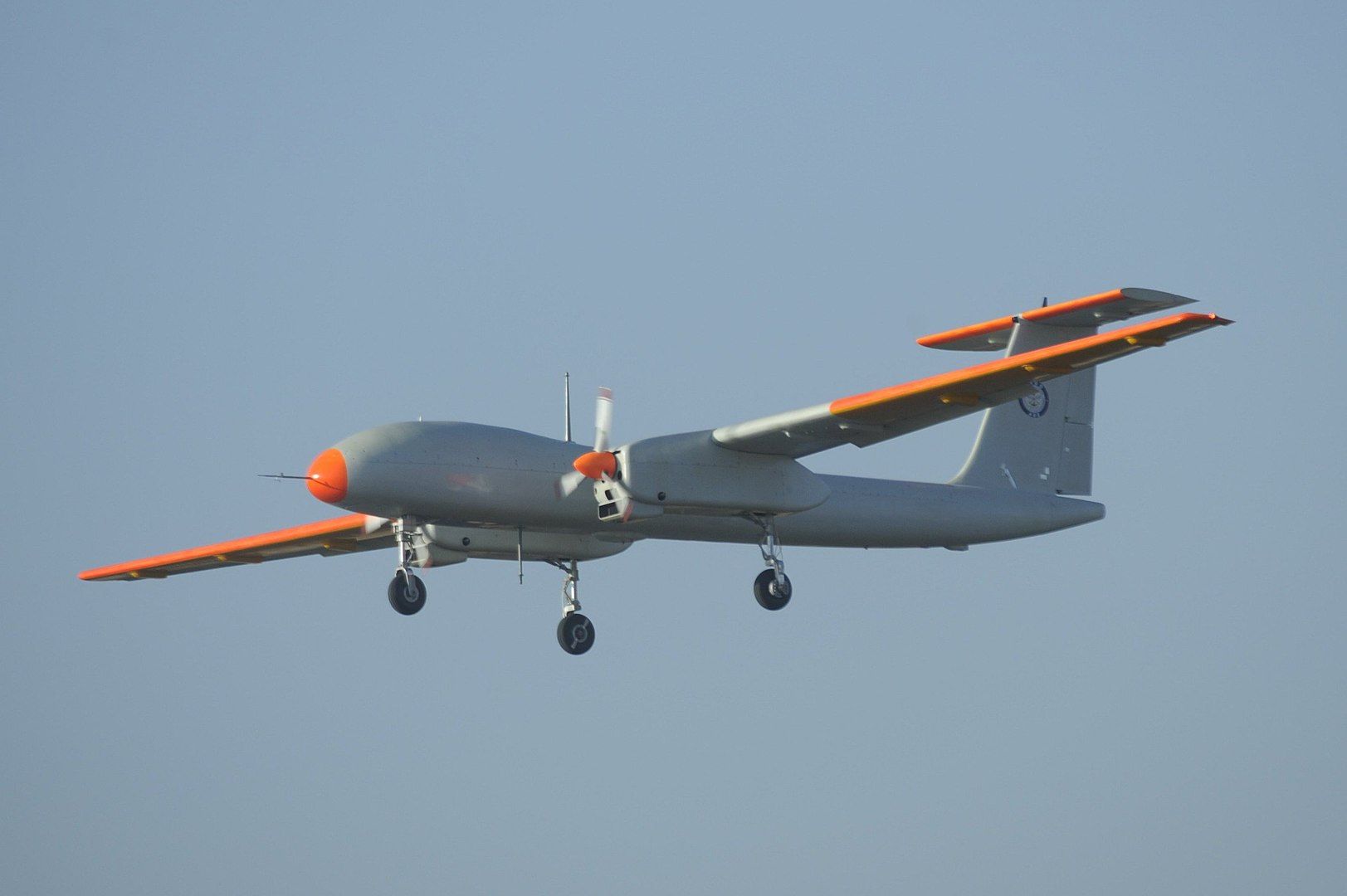The Indian Navy’s decision to acquire four Tapas drones despite performance shortcomings displays admirable foresight and a sense of responsibility.
The ANI reported on June 22 that the Indian Navy intends to use the DRDO-developed drones for surveillance over the maritime zone. “The Indian Navy is going to order four Tapas drones, and it is going to use them for maritime surveillance operations,” defense officials told ANI.
A consortium of Bharat Electronics Limited (BEL) and Hindustan Aeronautics Limited (HAL) will manufacture the drones.
“The deliveries would be made faster by the consortium as the first bird would be ready for delivery within 24 months of signing the contract. The existing birds or drones would be used for carrying out trials and improving their capabilities,” they added.
TAPAS: Development History
The TAPAS (Tactical Air-Borne Platform for Surveillance-Beyond Horizon 201 (Tapas-BH 201) ) project was sanctioned as a mission mode project in February 2011 with an initial deadline of August 2016. The deadline was revised several times, initially due to project management issues typical of a new aeronautics endeavor and later due to critical performance shortfalls.
The drone’s performance remained short of JQSR (Joint Services Qualitative Requirements) benchmarks in payload, operational ceiling, and endurance.
The weight of the drone is 2,800 kg instead of 1,800 kg, its operational ceiling is 27,000 ft instead of 30,000 ft, and its endurance is 18 hrs instead of 14 hrs.
The Time of India reported in January that India had defunded the TAPAS project because it failed to meet JSQR. It was left to the DRDO management to pursue the project or otherwise.
Rationale For Revival
Broadly speaking, the Navy has given DRDO additional funds and time to improve the TAPAS. The additional funds will likely come from the Navy budget.
Sources told ANI that the Navy is hopeful that DRDO will improve the drone’s performance. There is definitely scope for improving TAPAS performance in the short term.
The use of composites, for example, would give the drone a performance boost. The best part is that it is low-hanging fruit.
Adani Aerospace says that the indigenously built Drishti-10, an Elbit Hermes-900 clone, is an all-composite drone. One of the most important reasons for the TAPAS weight spiral, from 1800 kg to 2800 kg, was DRDO’s inability to build composite fuel tanks. They were forced to use metal fuel tanks instead, dramatically increasing weight.
Assuming that Adani Aerospace has “indigenous” capability to build composite fuel tanks, TAPAS could be back in the game, soaring to 30,000 ft!
There is also scope for improving the performance of the drone through the use of a suitable turboprop powerplant, instead of a diesel powerplant. It’s not clear why DRDO, which initially planned to use turboprop engines, switched to diesel engines.
Assuming that a diesel engine because a suitable turboprop engine was not available, it is possible that the lifeline to the project given by the Navy would help the DRDO resolve the issue by collaborating with a foreign turboprop manufacturer.

TAPAS: Performance Limitations
Some of the TAPAS’s performance shortfalls are due to its design, which is based on a conventional aerial platform. Most successful military UAVs use a single-engine, twin-boom design (SETB) with a turboprop engine featuring a pusher propeller fitted aft of the fuselage.
A twin-boom design increases overall aerodynamic efficiency and reduces drag. The wider fuselage facilitates fitting sensors and generates body lift, allowing for a shorter wingspan.
The design provides a clean and stable platform with a longer range, higher fuel efficiency, and better maneuverability. The UAV is structurally stronger. In case of an engine failure, the SETB design facilitates a longer-range glide.
Other advantages of the SETB design include:
-
It facilitates modular construction, simplifying assembly, maintenance, and potential upgrades.
-
Easy engine accessibility makes maintenance and repairs quicker and more cost-effective.
-
Avoids weight and fuel efficiency penalties accruing from the use of two engines
-
Fewer components compared to twin-engine designs translate to lower weight, simpler systems, and potentially higher reliability.
Due to the design limitations, TAPAS performance shortfalls could remain below GQSR benchmarks. However, that would only limit the TAPAS’s usefulness —not make it useless!
Safeguarding TAPAS Project Gains
Performance shortcomings notwithstanding, the DRDO developed many technologies critical for drone operations while developing the TAPAS, including the ATOL (Autonomous take-off and landing) system, satellite communication, indigenous SATNAV INS system, and high-bandwidth datalink.
DRDO has additionally developed indigenous payloads (Gymbal Payload Assembly Medium Range Electro Optic GPA Mk-IV, Medium Range Electro Optic MREO).
Finally, DRDO has been actively involved in developing a Synthetic Aperture Radar (SAR) for carriage on a MALE drone. SAR is an important airborne imaging sensor used for surveillance. It is highly likely that the TAPAS drones acquired by the Navy would be fitted with a SAR.
The technological gains from the TAPAS project must be preserved for use in future MALE drone projects.
The point here is that without funding for an active MALE drone, the effort, cost, and technology developed would be rapidly lost with time.
Conclusion
The Indian Navy has made a smart move by reviving the TAPAS project with what is roughly a LRIP (Low Rate Initial Production) order.
By reposing confidence in indigenous technology and the DRDO, the Navy is ensuring that it will stay strong and grow increasingly self-reliant in the days ahead.
It is possible that the Indian Army and the Indian Air Force will follow the Indian Navy’s example and fund the development of technology that they perceive to be critical to their needs.
If you don’t appreciate what you have, you will likely never get what you want!
- Vijainder K Thakur is a retired IAF Jaguar pilot. He is also an author, software architect, entrepreneur, and military analyst.
- VIEWS PERSONAL OF THE AUTHOR
- Follow the author @vkthakur




